Le journal bilingue de Glendon | Glendon’s Bilingual Newspaper

In This Issue
Page 2 ● LETTER FROM THE EDITOR VIE ÉTUDIANTE
Page 3 ● Inspiring Change: An Interview with Regenesis York
EXPRESSIONS
Page 4 ● Time can be so weird
Page 4 ● A Blank Page
Page 4 ● Leggings
Page 4 ● A Thin Veil
Page 4 ● Giving Birth to Words
ARTS ET DIVERTISSEMENT
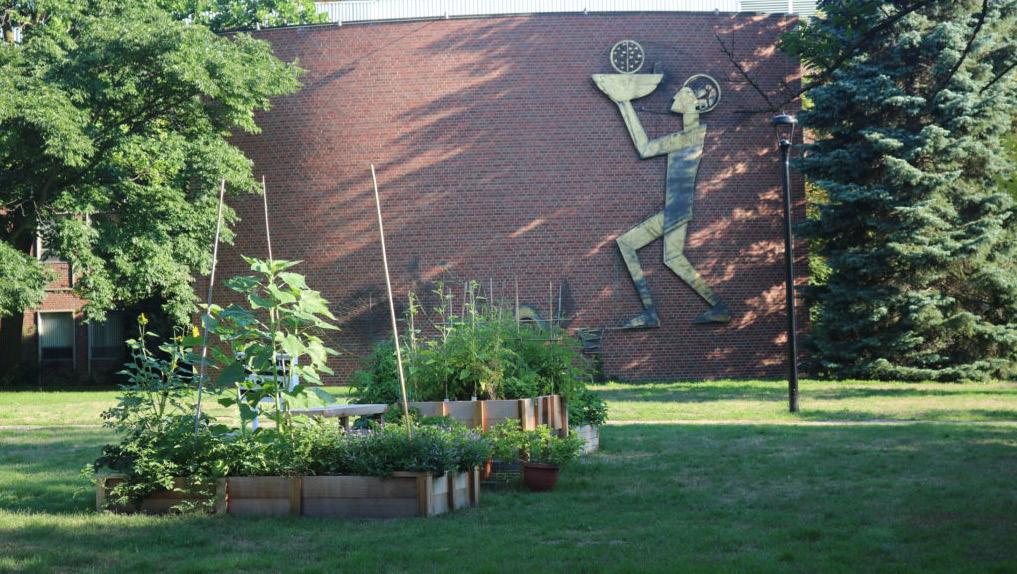
Page 5 ● Everything Everywhere All At Once a remporté sept Oscars
Page 5 ● A Review of Eric Kandel’s The Disordered Mind: What Unusual Brains Tell Us About Ourselves
CENTER SPREAD
Page 6 & 7 ● Glendon Formal 2023
METROPOLIS
Page 8 ● Le multilinguisme : un atout pour les élèves franco-ontariens
Page 8 ● Activités amusantes à faire avec votre chien à Toronto
SANTÉ ET BIEN-ÊTRE
Page 9 ● Coffee Shop (erm, Take-Out Sushi) Reflections: Bidding Farewell to the 2022-23 School Year
Page 10 ● Experience Mpowered Interactions with “The Cross Over Guru”
ACTUALITÉ ET OPINIONS
Page 11 ● Mother?
Page 12 ● Creativity, Movement, and Experience in the Classroom
Michael Aquilino
English Journalist
Last year, writing for volume 60 of Pro Tem, I had the opportunity to shine a spotlight on Glendon’s Historical Society. I noted the importance of being acquainted with the histories that have come to shape and define, for better and for worse, the world in which we live today. “Club Spotlight: Glendon Historical Society,” showcases an organization that helps educate students, and spread awareness about topics that should persist in our thoughts and discussions. The past still holds significance in a contemporary context; everything that present-day society knows and loves is a product of an earlier time. This may, however, include historical wrongdoings — which continue to have lasting impacts. While we cannot correct the mistakes of the past, we can
certainly admit to historical wrongs, and find ways for reconciliation in the present — working to ensure a promising future for all.
This being said the focus of this article is not Glendon’s Historical Society, but another organization which endeavours to reconcile past wrongdoings in the hopes of, not just engendering a promising future, but also contributing to humanity’s capacity to inspire promise in any future at all. With ecological concerns and climate crises rampant in modern environments and discourse, Regenesis York, with chapters at both Glendon and Keele campuses, strives to create better living circumstances for all.
I had the pleasant opportunity to interview Mae Shibasaki — Regenesis York’s Operations Director, and Glendon’s Chapter Coordinator. ‘22 Glendon alumnus majored in Interna-
tional Studies, Mae now works full-time with Regenesis York. Passionate about addressing communal issues of food insecurity, Mae was inclined to participate with Regenesis after the organization delivered a presentation in one of her classes. Since undertaking her positions with the organization, Mae has worked behind the scenes, overseeing the operation of initiatives and events. Mae has worked closely with other existing groups at York, including the Glendon Cooking Club, which she helped found during her last year of studies (@glendoncookingclub), and the York administration, including the Office of Sustainability. Mae propagates — she, along with her colleagues, makes things happen.
For the last issue of Pro Tem’s publishing year, I thought it would be of great benefit for students to, if not
Continued on PAGE 3
Vol. 61 Issue 10 : le 29 mars 2023
Inspiring Change: An Interview with Regenesis York Photo par www.glendon.yorku.ca/glendongarden
Notre équipe
Pro Tem est le journal étudiant du collège Glendon. Publié pour la première fois en 1962, c’est la plus ancienne publication de l’Université York.

Opinions published in Pro Tem are those of the individual writers, and do not reflect the views of the publication as a whole. We will not print copy deemed racist, sexist, homophobic, or otherwise oppressive.
Les lettres adressées au journal peuvent être éditées au niveau de la clarté ou du
Letter from the Editor
Coucou, Glendon !
It’s a sad day, as I write to you for the last time from my position as Editor in Chief. When I first became a Section Editor in 2020, never in my wildest dreams did I think I would eventually come to lead the paper, two years later. I’ll try to keep this last letter short and sweet, but poignant enough to show you my utmost sincerity.
Alors que l’année scolaire touche à sa fin, je ne peux m’empêcher de repenser à tout ce que Pro Tem a accompli au cours de l’année, notamment les dix numéros que nous avons publiés et les innombrables événements que nous avons couverts. J’ai peut-être versé une larme en repensant à tous les bons moments passés en équipe, mais vous ne le saurez jamais, j’emporterai ce secret dans ma tombe ! En ce qui concerne ce dernier numéro, je pense que les écrits parlent d’eux-mêmes. Qu’il s’agisse de poésie, de critiques de films et de livres, de réflexions sur le temps passé en classe ou d’une étude sur les avantages du multilinguisme, il n’y a pas moyen de minimiser l’intérêt de cette collection d’articles. Poursuivez votre lecture !
Worried about missing Pro Tem in the summer? Not to worry; Pro Tem will return in the fall, with a new team for the 2023-2024 academic year. I have the
contenu. All copy appearing in Pro Tem is at the discretion of the editorial team.
Feel free to respond to what you read in the pages of Pro Tem! / N’hésitez pas à réagir à ce que vouz avez lu dans Pro Tem!
To see past editions of Pro Tem, please visit our website: www.protemgl.com
Be sure to follow us on Instagram @protemglendon for reminders about upcoming deadlines and events.
utmost confidence that they will lead the newspaper in outstanding new directions, and I’m excited to see all that they do! Like the rest of the Glendon community, I will sit and wait in anticipation of what the autumn months bring Pro Tem, and remain an avid reader.
My three years on Pro Tem have been incredibly rewarding, and I can’t imagine a better place to learn and grow as an editor and writer. While I’m moving on and passing on the baton, I encourage anyone with interest in journalism, writing, editing, or even reading to apply for Pro Tem when hiring begins soon! Many more details to come.
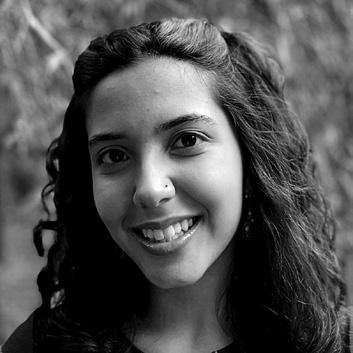

Enfin, merci à tous ceux qui ont fait de Pro Tem ce qu’il est cette année : contributeurs, membres de l’équipe et lecteurs ! Où serions-nous sans vous ? Veillez à vous engager dans notre giveaway, notre petit cadeau pour vous, disponible sur notre Instagram. Nous sommes toujours joignables sur Instagram @protemglendon, et par courriel à editor@protemglendon. com !
Goodbye for now,
Ariana Mah Editor in Chief | Rédactrice en chef 2022-2023


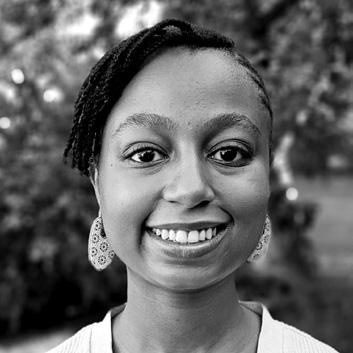




 Marya Tiwana
Marya Tiwana
Section Editor:
Issues and Ideas, Health and Wellness & Expressions / Actualité et opinions, Santé et bien-être & Expressions
Amie Sosa
Section Editor: Campus Life, Arts and Entertainment & Metropolis / Vie étudiante, Arts et divertissement & Métropole
The Pro Tem Team À propos de nous
Anna Noumtinis Bilingual Journalist / Journaliste bilingue
Peony Wong French Journalist / Journaliste française
Michael Aquilino English Journalist / Journalist anglais
Ariana Mah Editor in Chief / Rédactrice en chef ✉ editor@protemglendon.com
Elton Campbell Layout Designer / Maquetteur ✉ design@protemglendon.com
Shilpa Ahluwalia Photographer / Photographe ✉ photography@protemglendon.com
Anike Morrison Assistant French Editor / Rédactrice française adjointe ✉ frencheditor@protemglendon.com
Cecilia Palacio Gutiérrez Assistant English Editor / Rédactrice anglaise adjointe ✉ englisheditor@protemglendon.com
2 Pro Tem • www.protemgl.com • March 29, 2023
Inspiring Change: An Interview with Regenesis York (cont.)
already, become familiar with Regenesis, and its presence on campus and in the community. As the 2022-23 academic year draws to a close, it is my hope that after reading this article, students will feel encouraged to reach out to the organization, and participate in their ecological ambitions throughout the summer — or this coming fall. Speaking with Mae, I, myself, was enlightened upon the remarkable, with its instrumental leaders at its helm, activities of Regenesis — an organization that aspires to create real change, for real places, and real people.
I began the interview by inquiring about Regenesis as a more intricate, levied supported, non-profit, student organization, with mandates, goals, and values. Regenesis, according to Mae, ventures to employ students as changemakers — contributing to real comprehensive and practical initiatives that seek to take real, tangible, and visible action. Mae emphasizes its grassroots nature, focused on tackling local issues which can later translate to, and address, issues of greater mainstream social and environmental magnitude. While it is important to take note of global concerns, there are many people and natural spaces in our own backyards that are in need of assistance. We cannot fail to heed the nearby cries of those in need, neglecting and overlooking their suffering in favour of those whom we may never be immediately intimate with. This is not to say that distant issues cannot, and should not, be addressed, but rather, that we should first look to confront what is at our doorsteps, and thereafter incrementally precipitate change beyond them.
Abiding by a vision of “just sustainability,” in a just and affordable manner, while living within the limits of supporting ecosystems (i.e. not imposing ecological strain), Regenesis believes in fostering a better life for all, both in the present for the future. Regenesis aims to enable individuals to lead more enriching and fulfilling lives, addressing, as has been previously indicated, climate and ecological issues and crises from a different perspective.
In our interview, Mae imperatively remarked on the suboptimal living circumstances that many students routinely bear, facing challenges, amongst others, aca-
demically, nutritionally, financially, physically, and mentally. Noting that students and younger generations will be more greatly impacted by any ecological crises that may arise in the years to come, Mae believes that Regenesis provides a coherent platform for passionate and driven individuals to take action, and, in turn, through various initiatives, provide services available to the benefit of those who may need them most. Regenesis, thus, makes living more affordable, and assistance, more accessible — increasing the quality of life and security of students and the community.
Many initiatives can be highlighted to exemplify the work that Regenesis has done thus far. It is significant to note that, however, as per Mae, Regenesis often frames their activities as initiatives, not events. Regenesis’ efforts are often concentrated on continuous action, rather than singular, intermittent, occasions. At the core of Regenesis’ efforts are recycling, nutrition, cycling, and habitat restoration-centred initiatives. Pertaining to recycling, the borrowing centre (located in Hilliard D118 at Glendon, and in Cycle York, by the southeast corner of the QUAD student residence building, at Keele) provides an item library. Through online reservations, community members can borrow various products for personal use, which is a great resource available to students and the community. Individuals who may lack a needed item can access it, for a time — just remember to return it by the deadline to ensure that others may also have an opportunity to put in a request! Another recycling initiative at Regenesis is the reuse centre — formerly called the ‘free’ store. Here, students can find what they may need, and, unlike the borrowing centre, keep what they have found — free of charge! Ranging from clothing to household items, the reuse centre offers students an opportunity not only to help reduce landfill waste (by reusing instead of buying new), but also, to discover items they may not have otherwise found elsewhere. The reuse centre is located in Lunik at Glendon, and HNES111 at Keele, operating from 11:00 am-4:00 pm on Thursdays.

Moreover, issues of nutrition are often confronted by Regenesis in many ways. Initiatives such as the YUM! Market, at both Glendon and Keele, the Glendon Community Fridge (located in Lunik, on a pay-what-you-can basis), and the Glendon Community Garden, contribute to helping alleviate nutritionally-induced apprehension and insecurity, while further nurturing the principles of ecological sustainability. The YUM! initiative, perhaps the most sizable and substantial of the Regenesis
nutritional initiatives, allows students to purchase nourishing foodstuffs at affordable prices. Easily accessible to students at both campuses, YUM! welcomes prescreened vendors who must align with Regenesis’ visions of organic, local, and sustainable produce. The initiative advocates for and educates on social and environmental justice, and offers a wide selection of dietary options — including those vegan, and vegetarian. Mae, also the co-founder of Glendon’s Cooking Club, mentions an important cross-organization partnership: the Cooking Club, in conjunction with Regenesis, offers an alternative system of nutrition, granting students access to better food, while also teaching and educating in the kitchen. After all, if you give someone a fish, you will feed them for a day, if you teach someone how to fish, you will feed them for a lifetime. The Glendon Cooking Club can be found on social media @glendoncookingclub, and, for those looking to get involved, can be reached through email at glendoncookingclub@gmail.com Regenesis also partners with the Glendon Composting Crew, Many Green Hands — two other diligent campus agricultural organizations — and Lunik.
Lastly, Regenesis takes charge of habitat restoration. In doing so, Regenesis has frequently undertaken tree-planting initiatives; In the fall, they planted 150 new trees at Keele, and 30 trees and 30 shrubs at Glendon. At Keele, Regenesis looks to offset the harmful ecological effects of continued infrastructural development, and conserve its rapidly diminishing natural environment. At Glendon, Regenesis hopes to accomplish the same, howbeit, to a lesser extent — with a greater focus, with the campus’ thriving and flourishing natural environment, on habitat restoration, and education (especially about native species). For those who are not afraid of getting their hands dirty, and wish to get involved with tree-planting initiatives, more trees are set to be planted this spring - April 12 at Glendon, and April 13 at Keele. Students can sign up through this link: https:// sustainability.apps01.yorku.ca/machform/ view.php?id=25602. In participating with Regenesis’ tree-planting initiatives, you will be sure to make a long-lasting difference, as, in coordination with York’s facilities services, trees are planted in locations which will not be developed any time in the near future.
Overall, Regenesis’ efforts have been of critical substance for and impact in the York community and beyond. Its initiatives have contributed immensely to the betterment of the lives of many and the environments that surround them. Through its
many pursuits, Regenesis has been able to firmly uphold a policy of “zero-waste,” reducing the amounts of prodigal social consumption. Hence, Regenesis has had, and continues to have, many successful and positive impacts in its sphere of influence, changing the ways that many people perceive the world, and act within it — inspiring students to continue to take action long after graduation. Nonetheless, Regenesis can only function with the assistance of eager and zealous individuals, and would love to have your help and support! If you are interested in becoming a part of Regenesis, a fervent catalyst for social change, you can do so in two ways: 1) Through making use of Regenesis’ services (buying from YUM!, visiting Cycle York, etc.), in turn, taking action to support more sustainable societies, and 2) Through volunteering, that is, ensuring that Regenesis’ initiatives are able to operate effectively, and favourably. Through supporting, or working with, Regenesis, Mae believes that students will gain valuable transferable skills, including project and business management, and communication. For those who may seek greater challenges and responsibilities, the executive positions of YUM!, Reuse Centre, and Borrowing Centre Coordinators at Glendon are currently vacant, and positions with Cycle York (community bike centre) at Keele need to be filled. You can also make make a donation (monetary or material) to Regenesis, and, vote to increase Regenesis’ levy in September. Voting will grant Regenesis the resources that it requires to facilitate its projects, so be sure to keep an eye out; the vote is open to all undergraduate students! Students are encouraged to check out Regenesis through their socials (@regenesisyork, @regenesisglendon), and reach out through email for any further inquiries (info@regenesis.eco)!
On behalf of Pro Tem, I would like to extend a sincere thank you to Regenesis York’s Mae Shibasaki, Operations Director, and Glendon’s Chapter Coordinator, for her time, which helped make this article possible. I would also like to commend everyone who works with, and supports, Regenesis in their endeavours. Their work has truly helped to make a difference in the community. The environment is our home, and it is irreplaceable — it is thus all of our collective responsibility to protect it. Hence, I urge all Glendonites, in any way they can, to reach out to Regenesis, and begin taking action — every little bit counts!
Vie étudiante Pro Tem • www.protemgl.com • le 29 mars 2023 3
Expressions
Time can be so weird
Destiny Chan
Contributor
Time can be so weird
Time can be so rude.
Minutes go by like they’re running away from you
Numbers on a clock change drastically with just an upward tilt of your head Man-made digits hold so much power over the world.
Who decided that time should be counted?
Who decided that time shouldn’t be experienced, but logged, recorded, used, and abused?
Who decided that time should be our worst enemy?
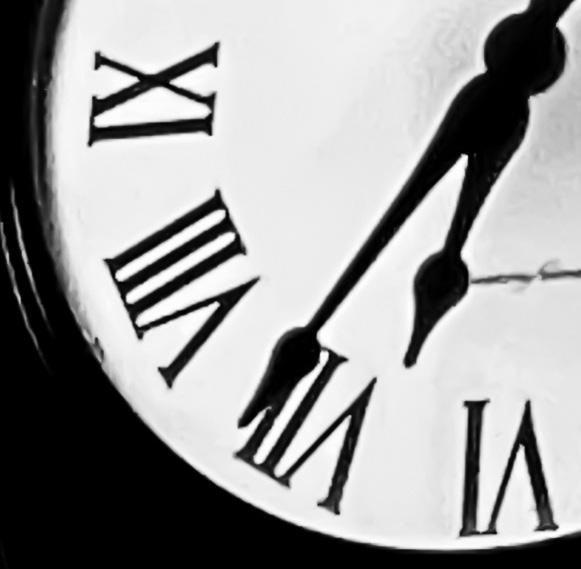
I’ve decided to live my life freely
The way I want to
But as time goes by “Maturity” is expected.
Why can’t I be an avocado that never ripens?
Why can’t a clock be a poster?
Why must I be eaten when I am ready? Why must I be expired if I am too late?
I don’t want to upset you, fail you, or disrespect you
A Blank Page
Andy Ruffett
Contributor
This is a blank page
There are no words written here
You are dreaming
Start watching T.V.
Start reading work that was not written by you
It will never be written by you
You are a failure
Success belongs in other people’s hands
You have no hands
Just legs that walk you from one mistake to the other
You try to speak
But words become spit dribbling down your chin
You seize involuntarily
There is no one to help you
Leggings
Destiny Chan
Contributor
I look down

And see
Two slabs of round meat
Strange
They are large (too large he said)
Thick (too thick they said)
Fatty (too fat she said)
A Thin Veil
Bisika Khara Contributor
Wisps of clouds bring forth fragments of a distant past.

But I cannot be someone always on time Always moving onto the next life stage, destination, or place I want to be who I am right now I want to let the situation be what it is Not what I or you try to will it to be.
I am 16, I am 17, I am 18, I am 19, I am.... No longer of this turbulent and fickle world.
So accept me
If you love me
And As long as you and I Are here
Right now
Come and sit down with me
Let’s lay somewhere In a salon Or Promenade
Like they used to Only, Of course, If you have the time.
Maybe even tasty
If they weren’t wrapped
Tightly
In a pair of thin leggings.
Memories that plead to be remembered and lead back. And I, foolishly, losing the sense of reality and dream, attempt to dissolve in the shimmering shadows of the distant past; that never was.
Giving Birth to Words
Andy Ruffett
Contributor
An orgasm takes place in your brain
A spark ignites in your eyes
You type
Furiously
Your fingers vomit out letters which form into words which form into sentences

The blank page is filled with black characters having a conversation
There’s no timer
There’s no time
It’s just you and this page
Your thoughts are racing
You ignore the daylight slipping by
You feel weightless in your chair
You smile
You stand up
You lift your mug in salute
You take a sip
The sweet nectar of victory.
You are dying in the eyes of the beholder
You fall out of your chair
You gasp for breath that isn’t there
Your eyes slowly close
You are at peace
The room disappears
This is a blank page.

4 Pro Tem • www.protemgl.com • March 29, 2023
Everything Everywhere All At Once a remporté sept Oscars
Peony Wong
French Journalist
Le film Everything Everywhere All At Once a remporté sept prix lors de la cérémonie des Oscars, cette année. Il a remporté l’Oscar du meilleur film, du meilleur scénario original, du meilleur montage, du meilleur réalisateur et des trois des quatre catégories d’acteurs. Le film, écrit et réalisé par Daniel Kwan et Daniel Scheinert, suit la vie de la famille Wang dans différents univers. Vous êtes prévenus, cet article révèle l’intrigue !
Dans l’univers actuel, il y a Evelyn Wang, immigrante sinoaméricaine, son mari Waymond Wang et leur fille Joy, née aux États-Unis. Ils gèrent une laverie automatique qui fait l’objet d’un contrôle de la part d’une inspectrice des impôts, Deirdre Beaubeirdre. Lors d’une réunion avec
Deirdre, Alpha-Waymond de l’Alphaverse prend le contrôle du corps actuel de Waymond et avertit Evelyn qu’il existe d’autres univers parallèles. Comme prévu, il y a une Alpha-Evelyn, mais pas d’Alpha-Joy. En effet, Joy est une méchante dans l’Alphaverse, et son pseudonyme est Jobu Tupaki. Elle a créé un trou noir qui ressemble à un bagel, qui a le potentiel de détruire le multivers. Seule Evelyn est capable de sauver le multivers et c’est exactement ce qu’elle fait à la fin.
En regardant le film, je ne comprenais pas bien ce qui se passait au début, mais au fur et à mesure que le film avançait, j’ai commencé à comprendre le sens profond de tout ce qui se passait. Les scénaristes ont réussi à intégrer dans l’intrigue différents thèmes tels que la neurodiversité, le traumatisme générationnel et l’identité asiatique américaine, et les acteurs ont fait un excellent travail pour donner vie à tout cela. Ce qui m’a le plus impressionné, c’est de savoir que seules cinq personnes ont travaillé sur les effets visuels. Croyez-moi quand je vous dis qu’il y avait beaucoup d’effets visuels dans ce film.
J’ai adoré voir l’actrice malaisi-
enne Michelle Yeoh, qui jouait Evelyn, remporter le prix de la meilleure actrice dans un rôle principal, et l’acteur sinoaméricain d’origine vietnamienne Ke Huy Quan, qui jouait Waymond, remporter le prix du meilleur acteur dans un rôle secondaire. Ce fut un moment tellement émouvant pendant les Oscars que vous avez pu le voir pleurer de bonheur pendant son discours de remerciement. Le fait qu’ils aient remporté des prix majeurs est également une grande victoire pour la communauté américaine d’origine asiatique et un pas en avant vers

A Review of Eric Kandel’s The Disordered Mind: What Unusual Brains Tell Us About Ourselves
 Anna Noumtinis
Anna Noumtinis
Bilingual Journalist
Eric Kandel, the psychologist who won a Nobel Prize in Physiology or Medicine for his work on learning and memory, is also the author of The Disordered Mind: What Unusual Brains Tell Us About Ourselves. Within its 255 pages are 12 chapters, each of which focuses on a specific brain disorder. The book follows a structure similar to a textbook, with in-depth discussions of psychological disorders and the brain areas affected by said disorders, accompanied by relevant research. The atypical behaviours exhibited by patients with a given psychological disorder are examined, and further contrasted with the behaviours of those without the aforementioned disorder. Through these analyses, Kandel uses these disorders to highlight the different brain structures at play when various human behaviours are presented. He makes reference to case studies, experiments, and other types of research conducted that have mapped these disordered or damaged brain areas, which were used to de-
termine the parts of the brain used for each specific behaviour. The text also touches on treatment options developed for these disorders, which use intact areas or behaviour strategies to compensate for the damaged ones. Kandel summarises the studies and research in an easily digestible manner, making it simple to comprehend the main results and purpose of his studies.
Each chapter is unique, in that it describes living with the highlighted disorder; some chapters contain biographies and quotes from interviews of individuals living with the disorder, while others contain mere vignettes. The biographies and personal anecdotes are touching, and give hope to the reader, that life with a psychological disorder can still be fulfilling, triumphant, and happy. The explanations of just what occurs in the minds of patients with these disorders helps to clear many stereotypes and misconceptions. Helpful diagrams of the brain and examples of famous individuals with brain disorders can be found among other images.
This book has furthered my understanding of of the experiences of those with psychological disorders, and where
science and society need to be applied, in order to improve life for these individuals. It is people like Kandel who bridge the gap between scientific concepts and real-world applications; it is difficult to work at making daily living increasingly stable, and less debilitating, when you don’t fully understand what these individuals are going through. I really love that Kandel gives credit where due, showing readers through research and science that everything we know about the inner workings of the human brain are due to those who suffer from brain disorders or damage. At the end of each chapter, he talks brifly about the direction of future research, therapies, and science, as well as what needs to be done to further advance treatments.
If you are studying psychology, especially neuropsychology, I highly recommend this book to boost your knowledge of psychological disorders, or explore the world of psychological disorder research.
As you can tell, this book is definitely science-heavy, with a lot of terminology about the brain, and references to concepts and constructs of the brain’s biology. This means that having a background in neu-
une industrie cinématographique qui les considère comme plus que de simples stéréotypes. Le dernier prix que le film a reçu a été décerné à Jamie Lee Curtis, qui jouait Deirdre. Elle a remporté l’Oscar de la meilleure actrice dans un rôle secondaire, face à sa partenaire, Stephanie Hsu, qui jouait Joy. Dans l’ensemble, Everything Everywhere All At Once mérite toute la reconnaissance qu’il peut recevoir. Je vous recommande vivement de le regarder si vous ne l’avez pas encore fait.
ropsychology, psychology or biology will likely make it easier to understand. However, there are so many online resources available that even if the sciences are not your forte, you could do some preliminary research about the topics, terms and concepts that are unfamiliar to you. Although I am reading this book for my case studies in a psychology course, as a part of the Cognitive Neuropsychology stream, I wanted to bring it to the attention of the rest of the Glendon community. This book is extremely well-written, and I was impressed by how easy it was to read and understand the content!
Pro Tem • www.protemgl.com • le 29 mars 2023 5 Arts et divertissement
Photo par IMDb.com
Photo par amazon.ca
Glendon Formal 2023 - Photos par AÉCG
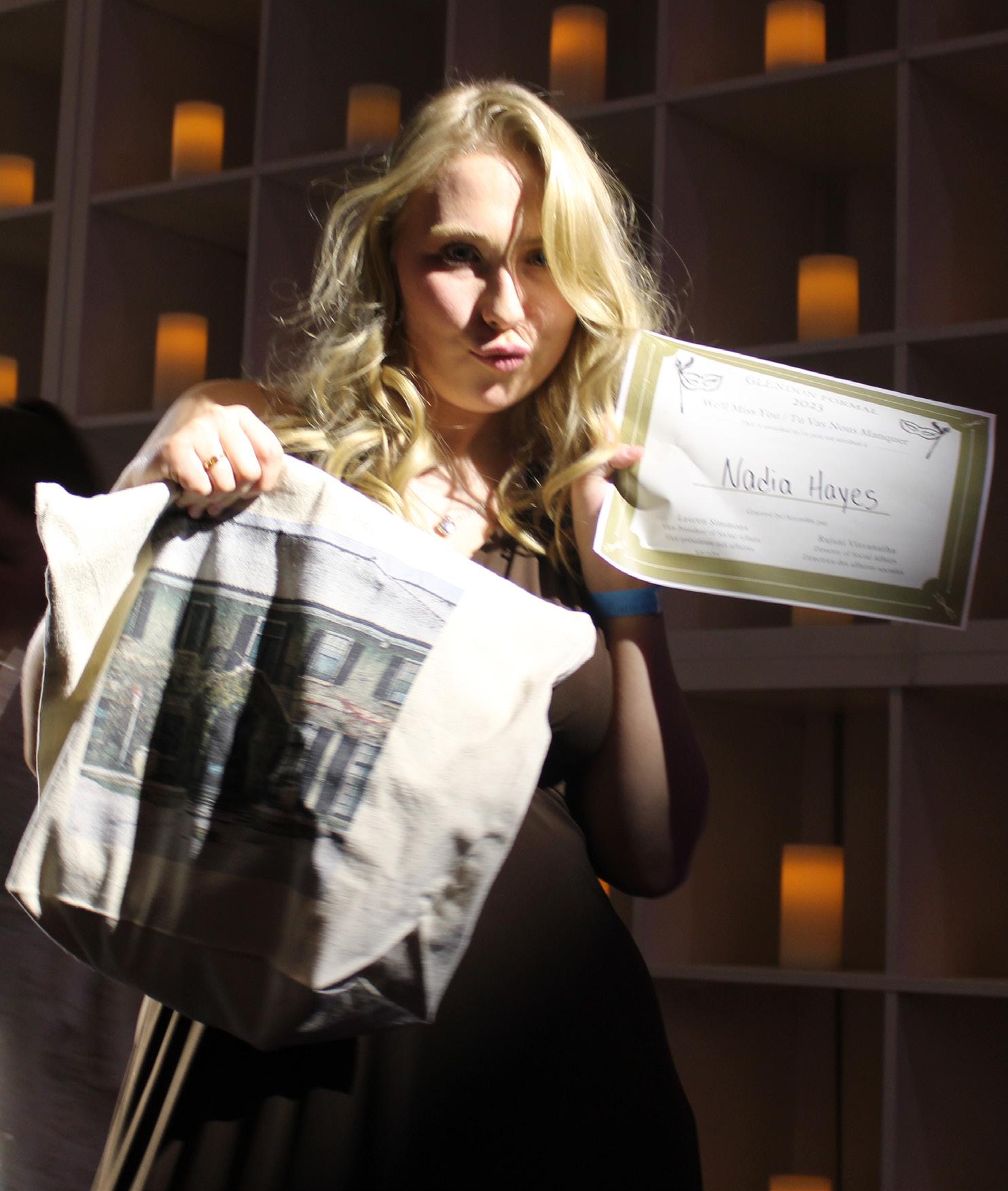

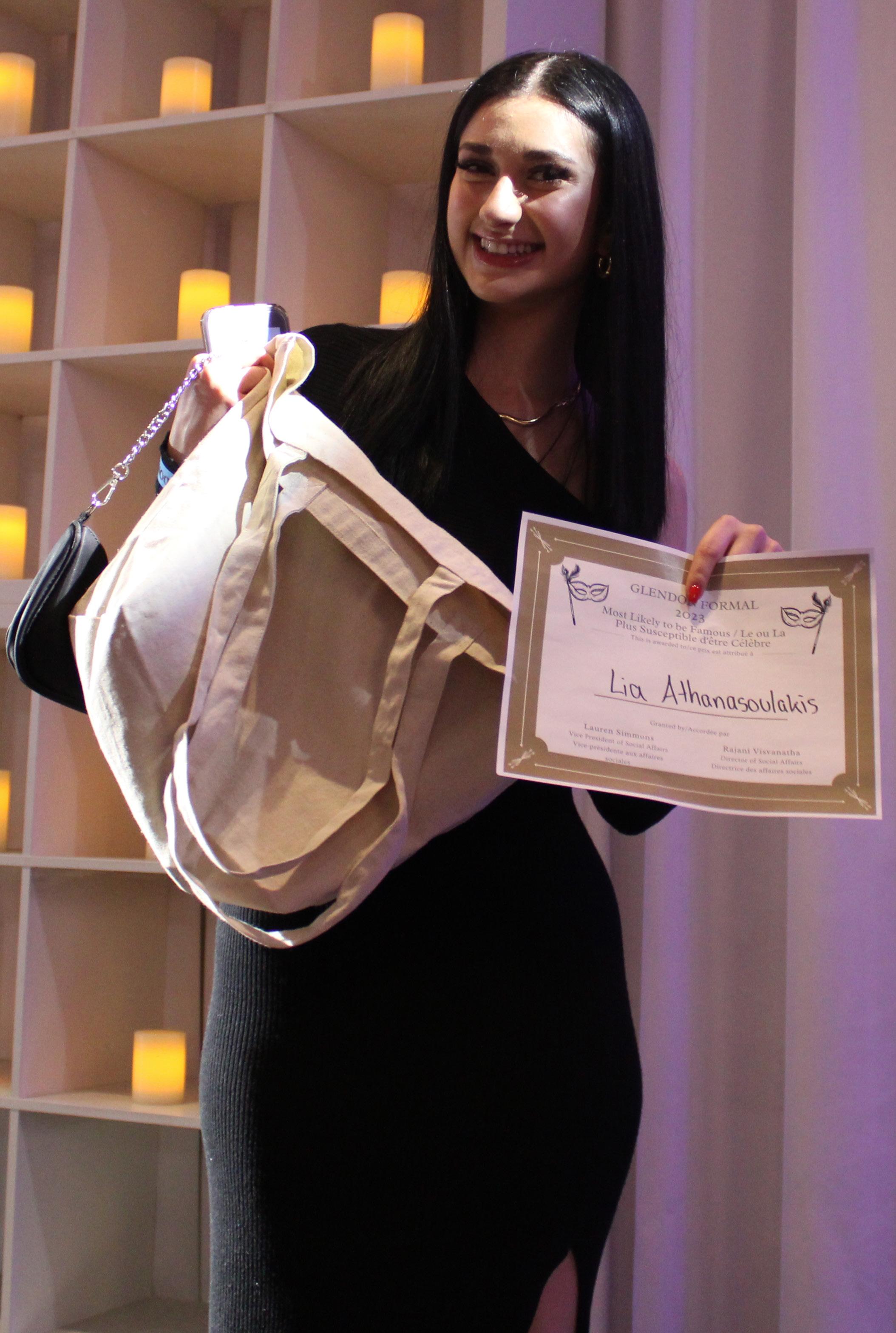

6 Pro Tem • www.protemgl.com • March 29, 2023

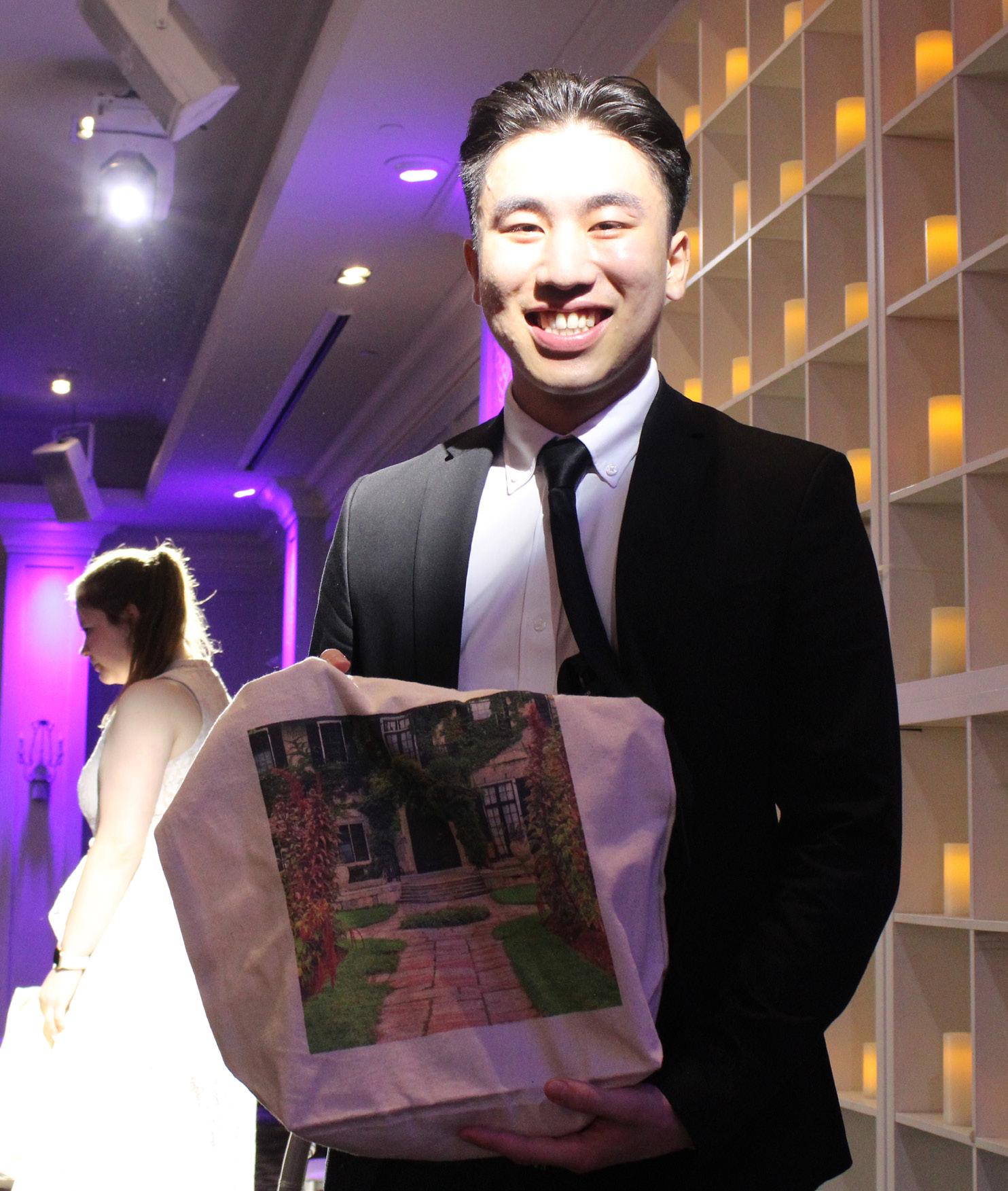

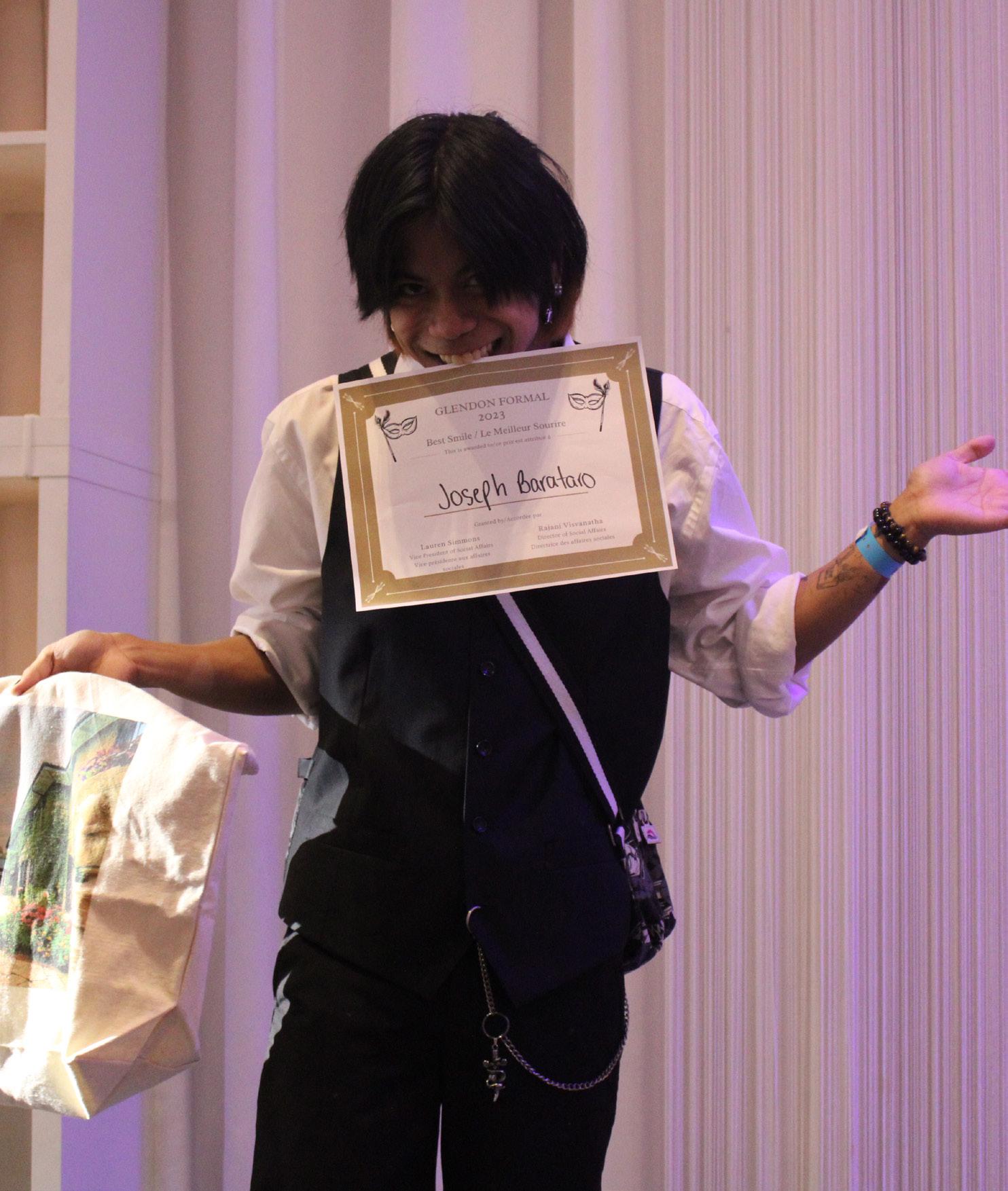
Pro Tem • www.protemgl.com • le 29 mars 2023 7
Glendon Formal 2023 - Photos par AÉCG
Le multilinguisme : un atout pour les élèves franco-ontariens
Gabriella Giordan (ancienne étudiante du campus Glendon)
Dans les écoles de langue française en Ontario, le fait d’étudier et de vivre en français unit les élèves vivant en contexte francophone minoritaire. Or, ces écoles sont également des espaces multilingues où les élèves parlent d’autres langues, telles que l’anglais, l’arabe, le créole et le kirundi. Il peut être difficile pour les enseignants d’encourager les élèves à parler en français entre eux, étant donné la présence de l’anglais et d’autres langues dans leur vie quotidienne. Toutefois, la connaissance de langues autres que le français ne devrait pas être perçue comme un obstacle à l’apprentissage et au perfectionnement du français des élèves franco-ontariens, sinon comme un atout.
De fait, selon Jim Cummins, pro-
Activités amusantes à faire avec votre chien à Toronto
 Peony Wong
French Journalist
Peony Wong
French Journalist
Maintenant que le printemps est arrivé, vous pouvez emmener votre chien avec vous pour plus de sorties. En tant que propriétaire de chien, je suis ravie de pouvoir profiter du grand air avec mon caniche bichon croisé de trois ans, Reese. Nous n’avons pas à nous soucier de marcher dans 20 cm de neige ou de nous emmitoufler pour affronter le froid. C’est le moment idéal pour faire des activités avec votre chien, car les températures extérieures ne seront ni trop froides ni trop chaudes. Il existe également des activités intérieures pour chiens si vous souhaitez exposer votre chien à de nouveaux environnements. Non seulement vous vous amuserez, mais votre chien aussi ! Voici quelques activités que vous pouvez faire avec votre chien à Toronto.
1. Allez à un parc ou à un sentier où votre chien peut circuler sans laisse
La chose la plus évidente à faire lorsque le temps se réchauffe est de visiter
fesseur en l’Ontario Institute for Studies in Education de l’Université de Toronto (2018), les enseignants doivent reconnaître les progrès linguistiques ainsi que la résilience des élèves multilingues. Ils doivent comprendre que la langue et l’apprentissage d’une nouvelle langue influencent l’estime de soi et l’engagement scolaire des élèves, afin de montrer à ces derniers que leur multilinguisme constitue une réussite et qu’ils doivent continuer d’améliorer leurs compétences langagières (Cummins, 2018).
Certes, le français est la langue d’apprentissage privilégiée dans les écoles franco-ontariennes et le sera toujours. Néanmoins, ce qui rend ces écoles uniques, sauf que l’apprentissage s’y fait entièrement en français, est leur caractère hétérogène du point de vue linguistique et culturel. L’adoption d’une perspective positive vis-à-vis au multilinguisme en lien avec l’apprentissage du français s’avère donc
un parc ou un sentier pour chiens sans les tenir en laisse. C’est une excellente façon pour votre chien d’interagir et de socialiser avec d’autres chiens. Il peut libérer son énergie en courant dans un champ ouvert et en jouant avec ses amis. Le parc à chiens Sunnybrook est très proche de Glendon et dispose d’une section séparée pour les petits chiens. Plus loin vers le sud, il y a aussi le parc Sherwood. J’adore y emmener Reese, car contrairement à un parc canin ordinaire avec un terrain plat, celui-ci comporte des promenades boisées et des sentiers à différentes altitudes.
2. Manger sur une terrasse Même si la saison des terrasses n’a pas encore commencé, la plupart des restaurants devraient avoir monté leur terrasse d’ici au mois de mai. La ville de Toronto propose un programme CaféTO aux propriétaires de restaurants et de bars qui souhaitent utiliser l’espace extérieur dont ils disposent en transformant leur partie du trottoir ou de la voie de circulation en terrasse. La plupart des terrasses CaféTO acceptent les chiens, mais il faut appeler à l’avance pour s’en assurer ! Parmi les restaurants où j’ai déjà amené Reese et dont je sais qu’ils ont une terrasse accueillante aux chiens, il y a Old School, Avling, Trattoria Nervosa et Lobster Burger Bar.
3. Se détendre à la plage
Si votre chien aime nager, la plage est l’endroit idéal. J’emmène Reese au parc canin Cherry Beach pendant
essentielle et il existe différentes manières de s’y prendre.
En salle de classe, les enseignants devraient faire preuve d’empathie envers les habiletés en français de leurs élèves. Ils devraient démontrer leur intérêt envers les langues que leurs élèves connaissent, les encourager à tisser des liens entre le français et d’autres langues, piquer leur curiosité par rapport aux cultures francophones et aux cultures mondiales, ainsi qu’intégrer des mots, des phrases ou des expressions à leur enseignement, avec l’aide de leurs élèves.
Les élèves multilingues méritent que leurs écoles et leurs enseignants tiennent compte de leur parcours linguistique, qu’ils mettent en valeur leurs différences linguistiques et qu’ils les soutiennent dans leur apprentissage du français ainsi que dans leur construction identitaire. Le fait de découvrir des aspects de leur langue et de celle de leurs camarades, tout en partag-

l’été, mais le parc est également ouvert au printemps. Le parc clos comprend un immense terrain ouvert avec des arbres, ce qui permet d’avoir beaucoup d’ombre pendant les mois les plus chauds. Il y a aussi du sable avant d’arriver à l’eau, alors n’oubliez pas de porter des chaussures appropriées ! Asseyez-vous, détendezvous et profitez de la vue sur le lac Ontario, la ville et la tour CN.
4. Magasiner à Shops at Don Mills
Shops at Don Mills est un centre commercial extérieur situé près de Glendon. Les chiens sont admis partout à l’extérieur, à condition qu’ils ne se trouvent pas sur les terrasses des restaurants. Cependant, vous pouvez toujours faire du shopping jusqu’à épuisement avec votre chiot, car certains magasins autorisent les propriétaires d’animaux de compagnie à amener leurs chiens avec eux. Il s’agit notamment d’Aritzia, d’Eddie Bauer, de Bath and Body Works et de L.L.Bean.
5. Tentez votre chance à Claw & Kitty
Une autre activité amusante à faire avec votre chien est d’aller au nord de la ville à Claw & Kitty à Markham. Il s’agit d’une salle d’arcade avec des machines à griffe de différents niveaux de difficulté. Toutes les machines sont remplies de peluches mignonnes et vous avez la possibilité de les échanger à la fin contre un choix encore plus grand de peluches. Il y a des chariots roses dans lesquels vous pouvez mettre vos peluches. Vous
eant le français comme langue commune, peut leur donner confiance en leur habileté langagière, les rendre fiers de leur héritage culturel et renforcer leur sentiment d’appartenance à la communauté franco-ontarienne, laquelle est d’une énorme richesse.
Cummins, Jim. Binogi Pedagogiskt Forum. (2018, 7 novembre). Jim Cummins on language and identity [vidéo]. YouTube. https://www.youtube.com/watch?v=xuvFaNgAv88&ab_channel=BinogiPedagogisktForum
pouvez même y mettre votre chien s’il est assez petit pour y entrer ! Pour ceux qui n’ont pas de chien, ils permettent aussi les chats ! Après tout, le nom de leur entreprise contient le mot chaton !
6. Prenez des photos à Monography Créez des souvenirs qui durent toute votre vie dans ce studio d’autoportrait situé au centre-ville et à North York. Le studio accepte les chiens, ce qui signifie que vous pouvez prendre autant de photos que vous le souhaitez avec votre chiot en 25 minutes. Les chiens sont admis gratuitement lorsqu’il y a un ou deux personnes, mais des frais supplémentaires de 30 $ sont exigés lorsqu’il y a plus de deux personnes. C’est une excellente façon de passer du temps de qualité avec votre chien et de créer des souvenirs inoubliables !
Metropolis 8 Pro Tem • www.protemgl.com • March 29, 2023
Photo par thewildest.com
Coffee Shop (erm, Take-Out Sushi)
Reflections: Bidding Farewell to the 2022-23 School Year
 Michael Aquilino English Journalist
Michael Aquilino English Journalist
As some of you may remember, one of my articles for last year’s final issue bore a title quite similar to the one above. Last year, I wrote the first of my reflection articles in the comfort of a quaint coffee shop. This year, however, I was unable to make it out for my medium cappuccino. Instead, my girlfriend and I, bogged down by coursework, chose to order in some Japanese delight from the comfort of my dining room. Our meal, packaged neatly in a styrofoam container, included spicy salmon, crab meat, and a concoction by the name of “crazy”, rolls, tied together with a seaweed salad, spicy mayonnaise, and two green teas on the side. It had been ordered from a local place that we frequent, and was utterly delicious. There is something special about the small circular pieces of fish, vegetables, and rice bound together by a strip of seaweed — simplicity and complexity all at once, keeping me craving more.
Perhaps sushi holds a deeper meaning, and can be used to better comprehend life itself. Life is often perceived as a complex and elaborate scheme, vacuuming people into its grasp from the moment they are born, tossing them in every direction thereafter, and then releasing them into the ether. People are in constant search of who they are, where they should go, and what they ought to do — and the answers are ambiguous. The beauty of life is that, well, there are endless beauties. Such is in the eye of the beholder, right? What is the true meaning of life? What will people do with their time and their energy? I find myself quite perplexed by this — heck, I’m not even sure of myself!
I recently stumbled across (on TikTok, of all places) a striking piece of literature, a piece that drove me to extensive contemplation. I am a person with many interests, desires, and aspirations. I am always seeking to pursue what I love, and, at the same time, experience new and exciting things. When it comes to future careers and ambitions, I have probably considered them all (having finally ruled out astronaut and pro-hockey player, but who knows?!). I feel as if society has instilled in us all the notion of life being much too short, despite how grand it is. Will I have time to do and
see everything I want? Will I have time to live out the countless versions of myself that I continue to envision? The answer is no, a devastating, heart-dropping, soul-crushing, no. The piece of literature that I stumbled across is a quote from Sylvia Plath’s The Bell Jar (1963). Having led a tragic life that culminated in her premature death at the age of 30, The Bell Jar was Plath’s only novel. While I admit that I have not read it in its entirety, one passage caught my attention nonetheless. For the sake of this article, I believe it to be of profound relevance, as it reads:
“I saw my life branching out before me like the green fig tree in the story. From the tip of every branch, like a fat purple fig, a wonderful future beckoned and winked. One fig was a husband and a happy home and children, and another fig was a famous poet and another fig was a brilliant professor, and another fig was Ee Gee, the amazing editor, and another fig was Europe and Africa and South America, and another fig was Constantin and Socrates and Attila and a pack of other lovers with queer names and offbeat professions, and another fig was an Olympic lady crew champion, and beyond and above these figs were many more figs I couldn’t quite make out. I saw myself sitting in the crotch of this fig tree, starving to death, just because I couldn’t make up my mind which of the figs I would choose. I wanted each and every one of them, but choosing one meant losing all the rest, and, as I sat there, unable to decide, the figs began to wrinkle and go black, and, one by one, they plopped to the ground at my feet,” (p. 73).
Plath’s eloquent analogy of the fig tree as a representation of life allows readers to attain more thorough understanding of their existence as human beings. In her analogy, Plath depicts an individual’s life as a fig tree laden with branches, from which fruits hang. Each marvellous fig appears to Plath’s character as a possible course of action, resulting in different futures and outcomes. The character, in the face of countless favourable opportunities, remains unable to confidently choose her destiny. Consequently, her indecisiveness leads her to ruin, taking away the chance to pursue any of the opportunities once present-
ed to her. The analogy, while poetic and moving, is at once melancholic; it serves as a representation of an issue which many encounter and deal with. For example, the TikTok that featured this passage was itself a video about the creator’s personal struggles. Many people may be unsure of what direction they want to take in life, while also grappling with feelings of inadequacy and low self-esteem. Others may be overwhelmed with the sheer magnitude of life, unsure of how to even approach the idea of self-fulfillment, and allowing life to instead slowly pass them by. Like Plath’s character, this causes them to miss out on rewarding experiences.
Hence, my advice to you is to always take the first stop — it does not matter where, but it does matter when. The sooner you take that first step, the better; even if you do not immediately reach your destination, as long as you continue to move, you will likely find it. Staying stationary and letting time pass you by will only stifle your ability to reach where you want or need to be, and eventually, your desire to take action will dwindle as well. One day, only the regretful thoughts about the life you could have led, had you taken that single first step, will remain.
In your pursuits, I would advise you not to choose just one fig — you can never know if you enjoy something unless you try it. Additionally, I would suggest not dwelling on the figs that become lost, as other, more plump ones may grow in their places. This being said, it is important to find a balance in your life, as eating multiple figs should not amount to all of them — eating all of them would be just as harmful as eating none. Revel in the joys of some of life’s greatest pleasures without missing the opportunities, but avoid overexerting and exhausting yourself by taking on too
many. Reflecting on this past academic year, in my classics of political theory course, I learned about Aristotle’s theory of the “Golden Mean” — a theory which I see as crucial to our discussion. Aristotle held that the key to life was to live in between the extremes — the excess, and the deficiency. The goal of Aristotle’s postulation was to live in moderation, to seek balance in one’s life. Should that balance be adequately attained, an individual will see their life fulfilled. Human beings are not machines that can do too much, nor are we inanimate beings that can do too little. I thus encourage you to discover the difference that you will make in this world, act upon it, and leave a lasting positive impact — for if there’s any meaning to this life, it’s that we may want to hold onto it, even long after we are gone.
On a concluding note, I will speak once more to my personal, nutritious, Sylvia Plath-induced analogy. Sushi is not as complex a creation as it may seem — it’s quite simple, actually. Forget the avocado, cucumber, carrots, shrimp, and crab — these ingredients are interchangeable and dispensable. What is your seaweed? What holds you, and everything in your life, together? What makes you whole, more than a disorderly collection of seafood and vegetables (a stir-fry?)? You must focus on the seaweed, which might be a combination of things working in tandem, or just one aspect. And if you haven’t found it yet, this is a reminder to get thinking. The world is large, and the possibilities are endless; get out there and try new things! Eat new food, listen to new music, watch new movies, meet new people, love the world — and love, or learn to love, yourself.
As always, Glendon and York will always be here to welcome you home! Have a safe, happy, and healthy summer!
Pro Tem • www.protemgl.com • le 29 mars 2023 9 Santé et bien-être
Experience
Mpowered Interactions with “The Cross Over Guru”
Elton Campbell Layout Designer
Donaree Muirhead is a youth activist, motivational speaker, entrepreneur, and self agency coach. She grew up in the rural community of Summer Hill in the Maroon Town area, within the parish of St. James, Jamaica. She has honed her people skills and built her confidence through community involvement as a youth, assisting in her parent’s grocery shop, located in the central square of her home community. Muirhead has been involved in professional community advancement for almost 20 years, and is the founder of the organization “Mpowered Interactions.” Through her organization, many businesses, organizations, teams, families, and individuals in Jamaica and globally have accessed her services. She is frequently hailed by the media, her clients, friends, and people from all walks of life, as a woman with the gift of guiding and inspiring others. Her ability to encourage positive and realistic change has earned her the title of, “The Cross Over Guru.”
In 2012 and 2013, Muirhead felt as though she was losing herself. Trusting her intuition, she made the daring decision to resign from her job at the National Centre of Youth Development in Jamaica. Months later, she faced severe financial issues and various other challenges, and was gradually moving towards homelessness due to her continued unemployment. Despite

these hardships, Muirhead managed to remain persistent, eventually conceptualizing and launching her organization, Mpowered Interactions. Dropping the first “e” from “empowered,” and stressing the “m” to reference her surname, she found a way to represent herself within the name. “Mpowered Interactions was for me…I believe that in all my interactions, it must be empowering. Either I am empowering you or you are empowering me…I was challenging how my mind is versus how the external world was beating me badly,” Muirhead stated on the Being Broadtail podcast, aired on YouTube in April 2022.
Mpowered Interactions does not just offer motivational workshops and developmental sessions; her initiatives have helped to improve businesses, and manifested countless success stories through her Ultimate Vision Board sessions. Muirhead is confident in the sessions she facilitates, because they do not focus on the materialistic and mendacious themes that many vision board exercises uphold today. These sessions have assisted many participants in rediscovering their purpose, core values, and guiding principles. The desire to produce aesthetic presentations by cutting glamorous photos out of magazines and adding them to large boards takes a backseat in Muirhead’s sessions, which are rooted in detailed self-assessments in order to unearth each participant’s purpose. “Resolutions are supposed to be solutions after you’ve assessed who you are. Where your weaknesses are, where your breakdowns are. What you’ve gone through that is not serving you…A resolution must come from deep down inside. A resolution isn’t external to the world. It’s about a decision that you’ve made to fix a part of you, to move you into your greater purpose,” Muirhead articulates on the podcast Live with Dara, hosted by Dara Smith on Instagram and YouTube in January 2022.
While a selfless empath who be-

lieves in expressing gratitude, Muirhead nonetheless remains mindful of the possible consequences of imbalanced relationships. On Live with Dara, Smith asks, “People have this to-do list of things that they should be getting done…what if you don’t have one? What if you’re just living?” Muirhead replies, “Why are you just living?...Living means that you’re receiving because once you’re alive you are receiving. So, where is the reciprocity in your existence?...nature gives and take…In autumn, the trees dem fall all of the leaves… and the leaves fall to the ground…those leaves turn manure in a deh earth fi feed back the same tree…The earth gives nutrients to the tree so that the tree could bear some fruits and have some nice leaves out there and look pretty during spring…then it fall (leaves) in autumn…those same leaves are what the tree give back to the earth to say thanks…Yuh can’t always a take, a reciprocity this name…You can’t put off the balance because if you’re always taking it means at one point in time its gonna go empty…it’s a cycle…” Muirhead remains cognizant of the fact that many people are just living out their existence without true contemplation. Though not a psychologist or psychiatrist, she aims to help others move beyond just living, all while neatly avoiding the role a practitioner might play. Muirhead is currently working on a journal that will contain affirmations, tips on working through emotions, journaling tips, and a guide to checking in on oneself. She frequently speaks out about the importance of acknowledging one’s emotions as being
natural, including happiness, sadness, and anger. However, she also encourages individuals to find healthy outlets to express their emotions. For example, paying attention to your breathing, as good breathing exercises have personally helped Muirhead to reduce her anxiety and panic levels. She also mentions the benefits of partaking in meditation to deal with certain challenging emotions.
To experience Mpowered Interactions with Donaree Muirhead, you can find her on Instagram at @donamuir.s or @mpowered.interactions, or on Facebook at Donaree Muirhead Mpowered Interactions

10 Pro Tem • www.protemgl.com • March 29, 2023 Health and Wellness
Photo par Donaree Muirhead, facebook.com/donaree
Mother?
Amanda Kadima Contributor
“What are you going to do once you graduate?”

“Do you have a boyfriend?”
“You’re not getting any younger. The time to have children is now.”
“It’s better to have them now than later. You don’t wanna be an older parent like I was when I had you.”
“What do you mean you don’t want kids? You don’t want to get married? What are you, selfish?”
“You don’t believe in love and marriage?”
“You’re being extremely selfish and you’ll regret it when you get older.”
“You’re going to end up dying alone. No one’s going to take care of you when you get older.”
These are just a few examples of the reactions I’ve witnessed from society when young women have expressed their desire not to marry or have children. Women are socially conditioned from a young age to want marriage and children; we are taught that being a wife and a mother will give our lives meaning, a sense of purpose. So when a woman expresses a contrary opinion, society deems her to be undesirable, selfish, and not a real woman. Personally, I haven’t decided if the roles of mother or wife are ones I want. I never fully identified with my girlfriends growing up, who have dreamed of being mothers. It’s simply not on my radar at the moment. Beyond that, I grew up in an environment where adults struggled provide financially for their children at times. Even as a child, I saw the stress of not being able to consistently provide. I was forced to parent to my younger siblings while still a child, at an age far too young for the task. These are all reasons why I remain undecided, and less than keen on the idea of raising a child. However, never say never.
I remember being questioned by a female family member, who has four children. She didn’t understand my hesitancy and confusion about being a mother. In her view, women are supposed to go to university, get their degrees, get married, and have children — that’s just what women are supposed to do. It worked out well for her; therefore, I should follow the same path. The conversation started out respectful, but soon shifted into a fierce debate around the benefits of being a childless woman.
Even though I grew up in a generation that believes in freedom of choice, I have realized there’s still a large swath
of people uncomfortable with the concept of women choosing not to have kids. The life of choosing to become a wife and a mother is one that more and more women are opting out of, and a reality that society cannot cope with. I hope that society stops asking women when they’re going

to have children. It’s extremely invasive in the first place, because you don’t know an individual’s medical history. Can they even have children? Have they been trying to conceive for a while, or have they recently miscarried? Moreover, we must remember the slogan of “my body, my choice.” I pray
that one day, society stops its shaming and guilt-tripping of women who desire a childfree life. Society needs to move past the idea of every woman as a nurturer, and reach acceptance of the dreams and desires of every woman, instead of a singular future for all.
Pro Tem • www.protemgl.com • le 29 mars 2023 11 Actualité et opinions
Creativity, Movement, and Experience in the Classroom
Alexis Skopelitis Contributor
“You’re dancing today,” the familiar voice of the office secretary told me over the phone at 7:45 a.m. I don’t dance, I thought. With these supply jobs, I’m immersing myself in all kinds of classrooms, comfortable or not. Earlier in the month, I taught auto shop, robotics, and computer science, none of which I am well versed in.
It’s 9:00 a.m., and here I am, meeting my students for the day, wondering how I’m going to teach them to dance. If anything, they should be the ones teaching me. As I read the lesson plan aloud, “students are to spend the period creating their own dances,” the students’ hands shot up.
“Miss, what kind of dance? Solo? Groups?
Contemporary? Hip-hop?” they asked me. “Your teacher didn’t specify, these are the only instructions they left,” I said, “I guess that means create whatever you would like but don’t forget to complete the assignment on Google Classroom first,” I urged. They sunk into their chairs.

About ten minutes had passed, and they began to slowly trickle into the dance studio. I then proceeded to witness one of the most beautiful moments in my career thus far, as the students became their own teachers. Music rang through the studio, and they immediately got into
formation, staggered – they had begun to freestyle. Though not professional dancers, most with little to no experience dancing outside the classroom, they seemed extremely talented. These students came alive right in front of me. They were working all together to dance in sync, to move to one beat, and to create something beautiful. They were singing at the top of their lungs to “I Want it That Way” by the Backstreet Boys. The subconscious pressure from the high school dynamic to act a certain way dissolved and disappeared in that dance studio. They were dancing to a plethora of genres: “Just Wanna Rock” by Lil Uzi Vert, “Cha Cha Slide” by DJ Casper, “Hit the Quan” by iLoveMemphis, “Crank That (Soulja Boy)” by Soulja Boy, and “Low” by Flo Rida – a timeless favourite. I couldn’t help but smile ear-to-ear even though my cheeks ached, and even though I might have come across as overly eager.
Students need a space to do what they love without judgment. Students need a space to be their own leaders, exercise initiative, and be themselves. Students need a space to move. This was the most human and alive I had ever seen my students – nearly unrecognizable, I might add, from when they first walked into the class. It’s easy to forget that students can smile; as teachers, we often get used to our students frowning at the thought of a new lesson, new project, or upcoming test. When given a space to be creative, students do smile. I even broke a new record that day of zero “washroom breaks” requested by the students – a proud moment for me.
This space of freedom may not be in a dance studio for all students. I experienced a similar wave of happiness watching my students in their woodshop
class as they built airplanes and tested the flight time of their creations by tossing them across the room. Maybe students need a space to be unconventionally creative. Students thrive in decolonized classroom settings: classrooms where they can collaborate, be creative, inhabit new experiences, embody leadership, and take risks. This is learning.
I acknowledge the level of privilege that comes from teaching in a school with dance programs and woodworking courses. However, what soon became clear to me is that creativity can be achieved anywhere. I think of my friend L, who was given a space to be creative in one of their English classes, and used it as an opportunity to affirm the depths of their identity. In a creative space, students have
time to self-reflect – to hear the deepest echoes of their souls, which can sometimes be silenced in rigid learning spaces. For L, the creative aspect of their English class created room for them to come into themself, and to express themself in a flexible, authentic way.
As I ponder how I can continue to foster creative spaces in learning, how to decolonize my classroom, and how I can give my students the freedom to learn through experience, I encourage you, my fellow educator, to embrace every smile you get from a student in a moment of creativity. I encourage you to take the risk of creativity, and to teach unconventionally –you’ll be shocked at how quickly your students grow.

12 Pro Tem • www.protemgl.com • March 29, 2023 Issues and Ideas












 Marya Tiwana
Marya Tiwana








 Anna Noumtinis
Anna Noumtinis








 Peony Wong
French Journalist
Peony Wong
French Journalist

 Michael Aquilino English Journalist
Michael Aquilino English Journalist






